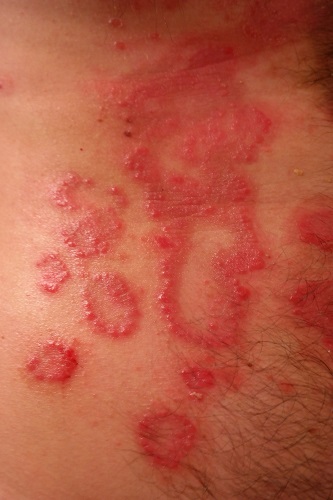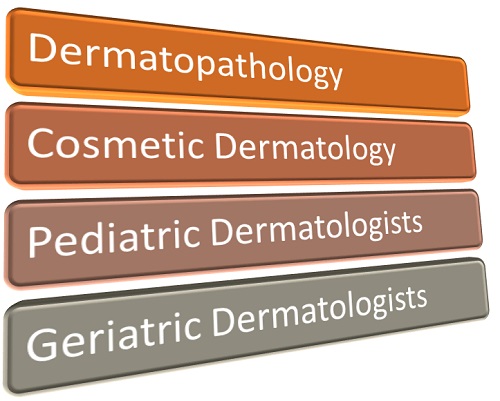Many medical specialties focus on certain organs or systems, like the cardiovascular system, the nervous system, or the digestive systems. Dermatologists specialize in treating the largest organ of the body: the skin. This branch of medicine, which is among the highest-paying medical-specialties out there, is concerned with conditions of the skin, as well as the hair and nails. All in all, dermatologists treat more than 3,000 different medical conditions, the American Academy of Dermatology Association reported. Those conditions range from the purely cosmetic to potentially life-threatening skin cancers and encompass everything in between.
What the Skin Shows Us About Health
IMAGE SOURCE: Pixabay, public domain
Doctors use many different technologies and procedures, from X-rays and ultrasounds to endoscopes, to study the internal organs of the human body. Unlike most other organs, the skin is readily accessible for medical examination without the need for invasive testing equipment. A close, careful look at a patient’s skin can tell a dermatologist a lot.
When a specific problem is what brings a patient to the dermatologist’s office, the issue is often an inflammatory skin disorder. Rosacea, a condition characterized by facial redness, is one such condition that affects an estimated 16 million Americans, according to the National Rosacea Society. Another common problem is eczema, also known as atopic dermatitis, a condition of dry and itchy skin that can become severe enough to cause intense discomfort that impacts your life. Eczema impacts more than 30 million people in the United States, according to the National Eczema Association. Even more common is acne, breakouts of whiteheads, blackheads and other varieties of pimples that affect 50 million Americans, including up to 87 percent of teens, Healthline reported. Dermatologists treat all of these common conditions, as well as many more skin disorders.
Like other organs, skin can also develop cancer, or uncontrolled growth of abnormal cells and tissue. Screening for, diagnosing and treating skin cancer is an important part of the field of dermatology. Patients may come to a dermatologist because of unusual skin changes, or the physician may observe concerning growths or changes during a routine screening examination. There are different varieties of skin cancer, some of which grow quickly and others of which grow slowly. Skin cancers are often able to be removed completely by a dermatologist, especially when found before they spread.
Inflammatory skin disorders and skin cancer may reflect only a condition of the skin itself, but dermatologic symptoms may also give a glimpse into what’s going on inside the body. Many systemic conditions, like diabetes and even some forms of non-skin cancer, can cause patients to develop rashes or other skin changes and symptoms.
Most dermatological consults begin with a physical exam in which the doctor looks closely at the skin, but procedures like biopsies may be needed to determine with more certainty what a growth is. Other tests, like blood tests, can assist in diagnosing non-skin disorders.
Subspecialties of Dermatology
If a particular specialty within dermatology appeals to you, you may choose to focus on it as a subspecialty of your practice. For example, if you find it rewarding to screen for and treat skin cancer – potentially saving patients’ lives – then you might specialize in dermatologic oncology. Perhaps you enjoy the laboratory work of looking at specimens under a microscope and determining what they are. In that case, dermatopathology may be a fitting subspecialty to pursue.
Another major area of specialty is cosmetic dermatology. Although the field of cosmetic dermatology doesn’t have a specialty training program accredited by the Accreditation Council for Graduate Medical Education, it is a popular field among both patients and practitioners.
What cosmetic dermatologists find particularly fulfilling about their work is being able to help people whose cosmetic skin problems, like scars from burns or other injuries, make them feel self-conscious and reduce their quality of life, the American Medical Association reported. Of course, a patient doesn’t need to have suffered a trauma to seek out cosmetic dermatology. Whether you’re injecting Botox into the skin to reduce wrinkles or using high-tech lasers to achieve permanent hair removal, your work in cosmetic dermatology is likely to do more than make your patient look better. It may make them feel more confident, present themselves better to the world and achieve more success in the things that matter to them.
Dermatologists can treat patients of all ages, but some dermatologists choose to focus on a certain age group. Pediatric dermatologists treat skin disorders in children, while geriatric dermatologists focus on the skin of aging adults, usually over age 65.
Additional Resources
What Procedures Would I Typically Go to a Dermatologist For?


